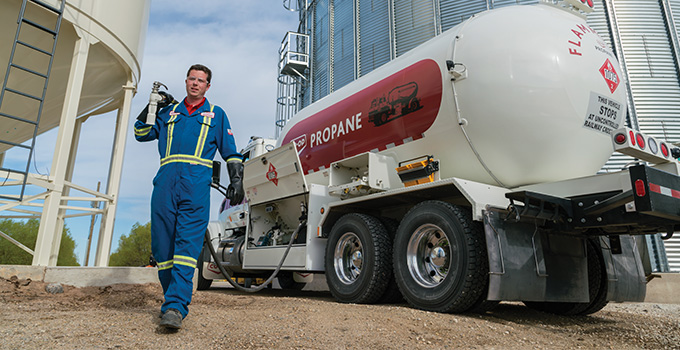Many farmers are installing new, advanced technology grain-drying systems to improve their operational efficiency and guard themselves against logistical disruptions in the grain supply chain. However, a number of cost, capacity and maintenance considerations should be discussed before investing in new drying systems.

Factors pushing modernization
Jamey Guild, Propane Services Department Supervisor for Federated Co-operatives Limited (FCL) in Brandon, Man., explained that it’s hard to pinpoint which dryer types and brands are the most popular. He mentioned that the most common systems tend to change every few years, likely influenced by supply chain availability and other factors.
Logistical challenges
What is clear is how logistical challenges are spurring more farm operators to eschew smaller, legacy batch-drying systems in favour of larger, continuous flow systems.
“With just storage and fan systems, that doesn’t dry things down enough. Maybe it can take a point or two off moisture levels, but when moisture levels are higher than that, it’s not effective,” said Guild.
“We probably install 30 to 40 dryers a year on average. It’s not a huge amount, but it is pretty decent for Manitoba. On-farm grain drying is certainly becoming more common, in part because farms are just getting bigger. The more acres there are, people don’t have time to wait. They can’t just say, ‘I’ll leave the crop in the field to see if it dries out.’”
Guild reiterated dryers comprise just one component of larger investments in grain handling and storage infrastructure. Growers are increasingly viewing these systems as a way to boost productivity and minimize risks related to logistical challenges in the grain supply chain.
Labour needs
Labour – or the lack thereof – is also a factor driving adoption. Everyone says it’s becoming more difficult to hire seasonal help on your farm. If one person can handle the system and move grain around, as opposed to three or however many people were needed to operate older systems, that’s a big benefit,” said Guild. “It seems like the younger generation is going to the big continuous flow systems. With the new dryers, you can be in the combine and watch what that dryer is doing on your phone.”
Regulatory requirements
The scale of new drying infrastructure can itself bring additional regulatory requirements.
Most grain dryers operate on propane or natural gas where utility infrastructure allows. For those looking to install propane tanks in the 30,000- to 100,000-gallon range (approximately 113,500 and 378,500 litres, respectively), additional storage regulations from both Environment and Climate Change Canada and your provincial government apply.
“For example, Manitoba has additional requirements for any single propane storage tank over 10,000 U.S. water gallons. Environment and Climate Change Canada also has rules for aggregate storage of over 2345 U.S. water gallons. Co-op Propane is familiar with both of these regulations and can guide our customers through the process,” Guild said. He cautioned interested parties to do the math, though, as the additional steps required to install propane storage on this scale bring higher installation and maintenance costs.
“Often the payback just isn’t there.”
Serviceability and future growth
Accounting for future business growth and ease of maintenance are important considerations, too. Brent Van Ryssel, a farmer and Winnipeg-based Equipment Team Advisor with FCL, said it’s not uncommon for farmers to make significant investments in new grain storage and drying systems only to find themselves short of capacity after subsequently expanding their production operation.
While many maintenance tasks can still be performed by farmers themselves — greasing bearings, cleaning screens, tightening belts, and so on — Van Ryssel said checking and calibrating computers and sensors involved in moisture detection, shut-off and blower operation and other components can require specific expertise from the company which produced the system. In addition, full-system checks should be performed prior to busy seasons.
“This applies to smaller dryers, too. Some of these systems are just so complex now. If you’ve made the investment, it’s just like a combine or other equipment. Most people do pre-harvest checkups with their John Deere or Case dealer because if it goes down, then you’re going to hit a major hurdle. But with regular maintenance and early checkups, you can avoid these issues and keep things running smoothly throughout the season.”
For more information about equipment and services, including online bulk fuel orders through the Co-op app and on-farm delivery, speak to your local Co-op.

